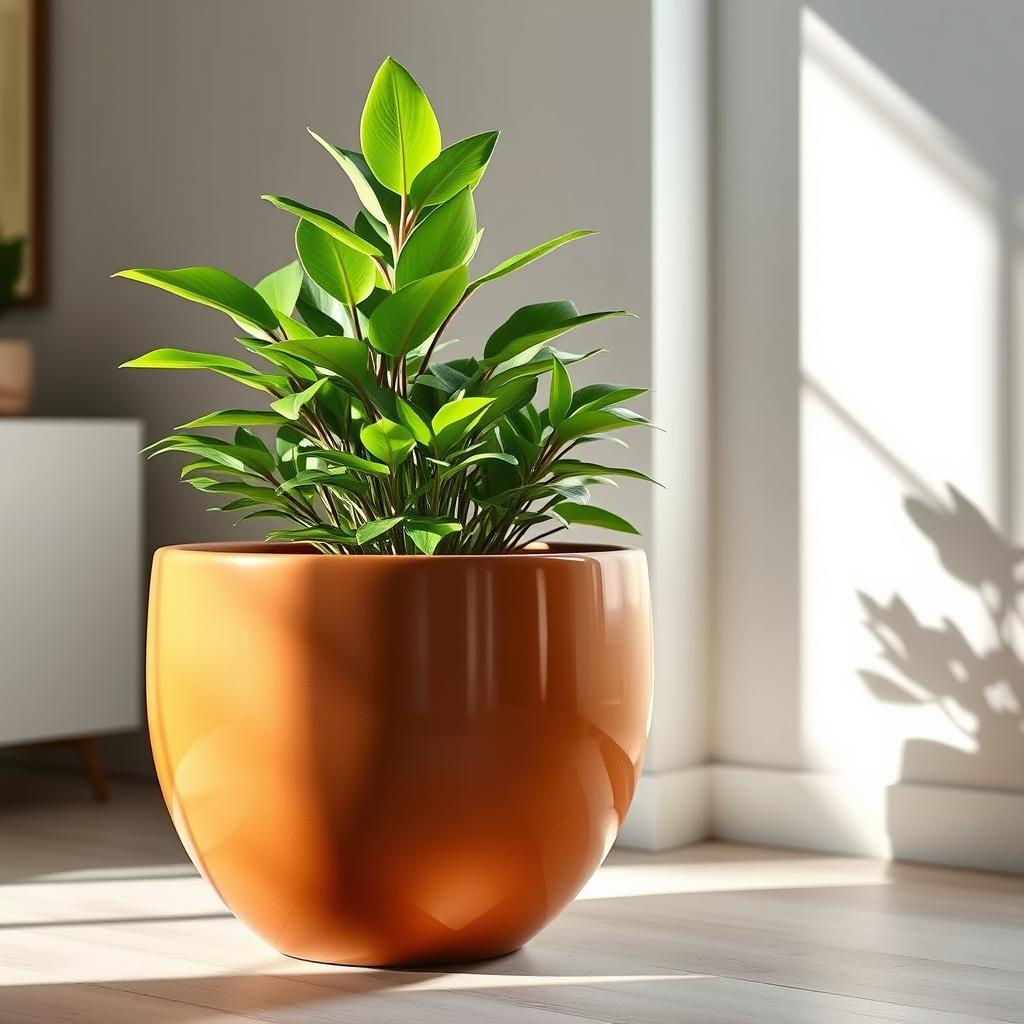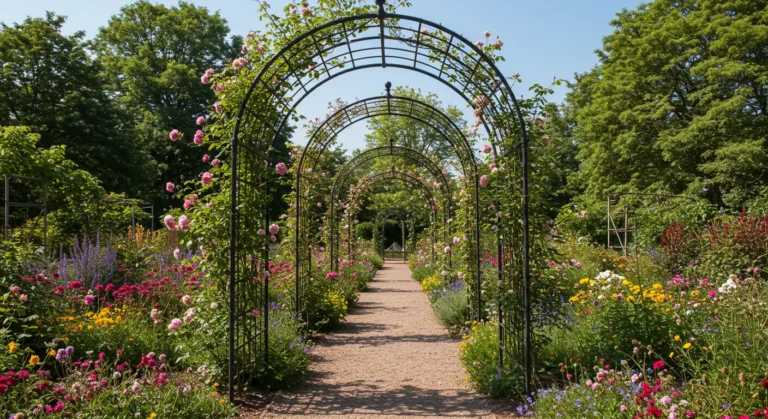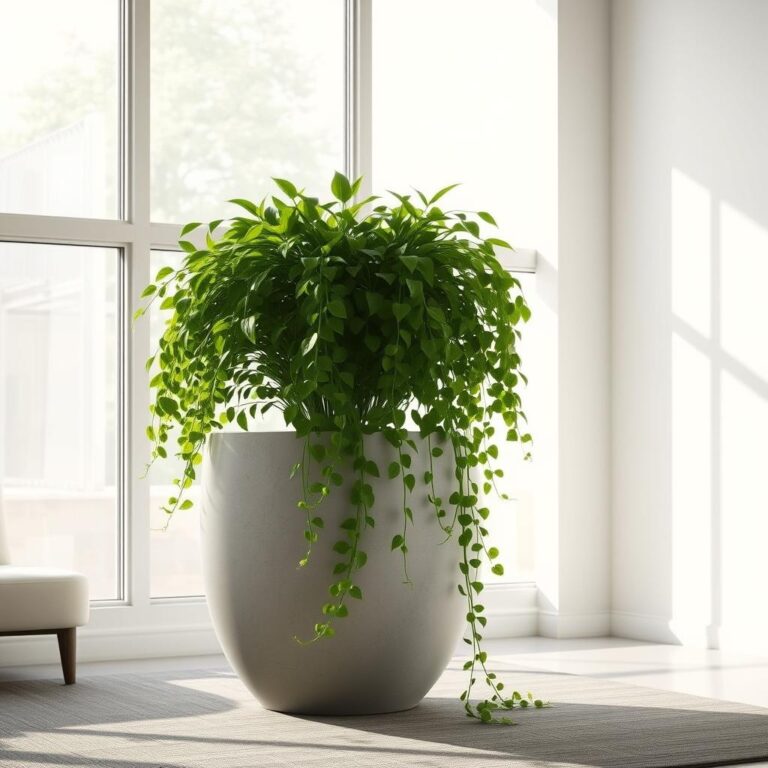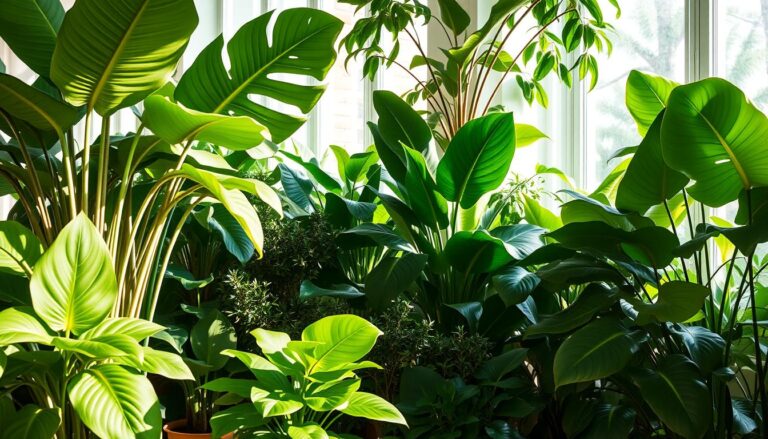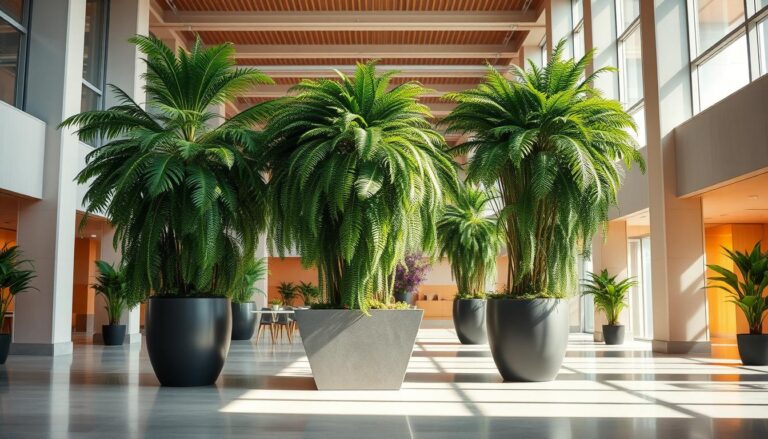Stylish Large Indoor Plant Pots for Any Room
Bringing the outdoors in has never been more popular, and stylish planters are at the forefront of this trend. Using large plant pots as both functional containers and stylish decor elements can transform any room in your home.
As the trend of incorporating substantial indoor greenery continues to grow, the need for appropriately sized containers has become increasingly important. A well-chosen pot can serve as a statement piece while providing a healthy environment for your plants to thrive.
With a wide variety of materials, shapes, sizes, and designs available, you can find the perfect planter to complement your interior design style, from minimalist to bohemian.
Table of Contents
Bringing Life to Your Space with Indoor Planters
Indoor planters serve as a bridge between the outdoors and indoors, creating a harmonious balance in your home. They not only add a touch of natural beauty but also improve air quality and overall well-being.
Indoor planters transform living spaces by introducing natural elements that foster a connection to nature. This connection has psychological benefits, including reduced stress and improved mood.
Strategically placed planters can enhance interior design by adding texture, color, and organic shapes. Different rooms benefit from various types of plant life, such as humidity-loving plants in bathrooms and air-purifying varieties in bedrooms.
- Enhance interior design with natural elements
- Improve air quality and reduce stress
- Add texture, color, and organic shapes
By choosing the right pot or planter, you can complement your existing decor and create a welcoming atmosphere in your indoor space.
Types of Large Indoor Plant Pots
The world of large indoor plant pots is vast, offering numerous choices for homeowners to enhance their living spaces. We offer plant pots in a wide variety of sizes to give your plants security with room to grow.

Floor Planters
Floor planters are substantial in size and designed to house larger statement plants. They often come with stability features to prevent them from tipping over, making them a great choice for empty corners or open floor plans.
Tabletop and Shelf Options
Tabletop and shelf planters are proportioned for elevated surfaces, bringing greenery to dining tables, coffee tables, or bookshelves. These pots are perfect for smaller spaces or for adding a decorative touch to any room.
When choosing between floor and elevated planters, consider factors such as available space, lighting conditions, and the specific plants being housed. Different types of planters serve various practical purposes, from mobile planters on casters to stationary statement pieces.
Materials That Make a Statement
The material of your large indoor plant pot can significantly impact both the health of your plants and the aesthetic of your space. Indoor planter materials include ceramic, metal, plastic, concrete, glass, jute, earthenware, stoneware, terracotta, and more. Each material brings its unique characteristics to the table, influencing both the functionality and the visual appeal of the planter.
Ceramic and Terracotta Choices
Ceramic and terracotta planters are popular for their natural look and breathability. Ceramic planters offer excellent moisture retention and come in a variety of glazes and finishes, making them versatile for different interior styles. Terracotta, being a type of earthenware, adds a traditional charm and is known for its ability to allow roots to breathe.
Modern Metal and Concrete Designs
For a more contemporary look, metal and concrete planters are ideal. They offer a sleek, industrial aesthetic that can complement modern interiors. Metal planters can be made from various metals, including aluminum and steel, while concrete planters provide a robust and durable option.
Different materials not only affect the appearance of your planters but also impact plant health. Factors such as insulation, moisture retention, and breathability vary across materials. For instance, ceramic and terracotta are known for their breathability, while metal and concrete may require more careful management of moisture.
| Material | Breathability | Moisture Retention | Aesthetic Appeal |
|---|---|---|---|
| Ceramic | High | Excellent | Versatile |
| Terracotta | High | Good | Traditional |
| Metal | Low | Variable | Modern |
| Concrete | Low | Good | Industrial |
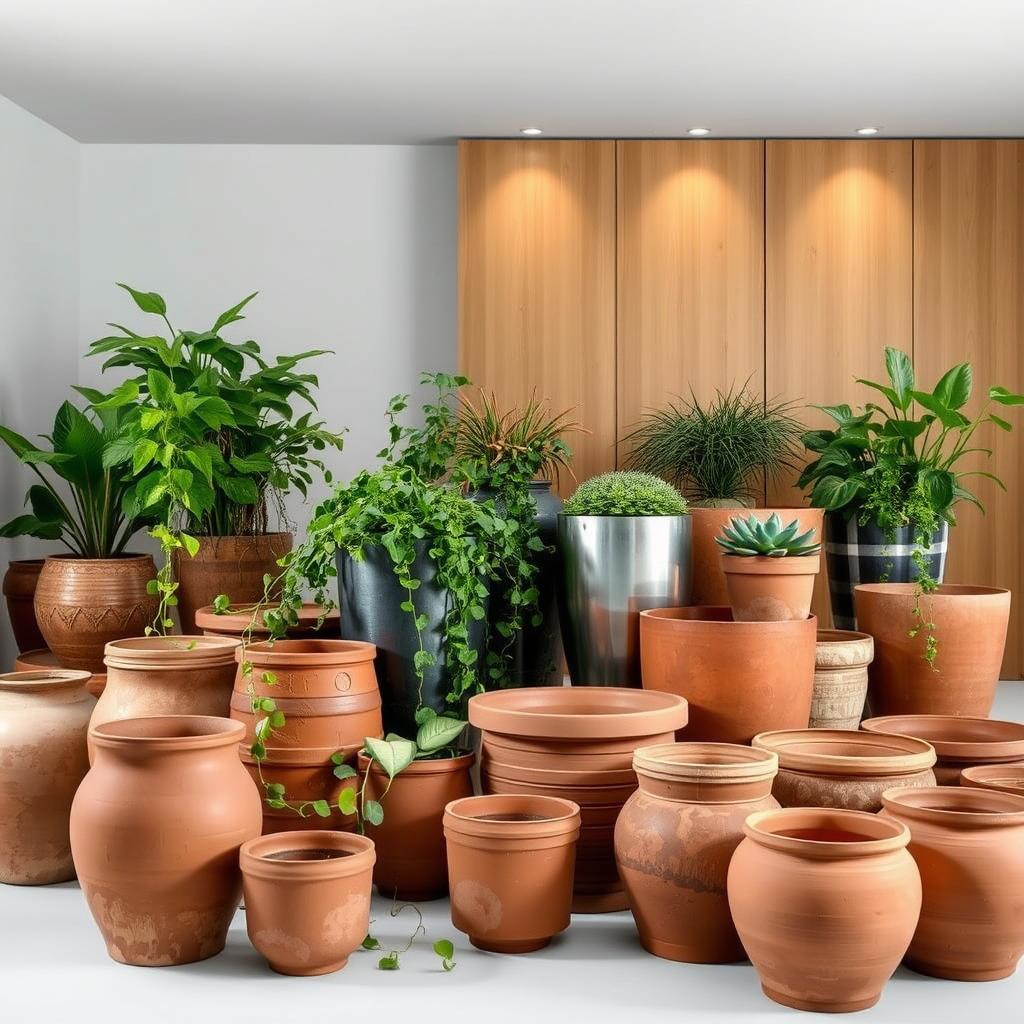
Mixing different materials can create a visually interesting collection of indoor planters. By combining ceramic, metal, and other materials, you can add depth and variety to your indoor garden.
Choosing the Right Shape for Your Space
The shape of a planter is more than just aesthetics; it plays a crucial role in defining the ambiance of your space. The right shape can enhance the beauty of your plants and complement your interior design.
Round and Cylindrical Planters
Round and cylindrical planters are versatile and tend to complement most design styles. They fit well in corners or alongside furniture, creating a softer, more organic feel that balances angular furniture and architectural elements.
For instance, tall cylindrical planters can emphasize ceiling height, while low, wide planters can ground a space. This makes them ideal for various room layouts.
Geometric and Unique Designs
Geometric planters with bold lines and unexpected angles serve as artistic elements, adding a contemporary appeal to any room. Unique and asymmetrical designs can function as sculptural art pieces that enhance a room’s character.
To create visual harmony, you can either match planter shapes to existing design elements or intentionally contrast them for dramatic effect. For example, pairing a geometric pot with minimalist decor can create a striking focal point.
| Planter Shape | Ideal Placement | Design Style |
|---|---|---|
| Round/Cylindrical | Corners, alongside furniture | Most design styles |
| Geometric | Focal points, modern spaces | Contemporary, minimalist |
| Unique/Asymmetrical | Statement pieces, eclectic spaces | Artistic, eclectic |
Size Considerations for Healthy Plants
Selecting the right pot size is crucial for the health and growth of your indoor plants. A pot that is too small can lead to root binding, while one that is too large may cause overwatering issues.
Height and Width Dimensions
The height and width of a planter significantly affect both the aesthetic presentation of the plant and its growing conditions. When choosing a pot, consider the mature size of your plant to avoid frequent repotting.
A planter that is too small may restrict root growth, while one that is too large can make the plant look lost. For example, a tall, narrow pot is ideal for plants with deep roots, such as tropical trees, while a wider pot suits plants that spread out, like philodendrons.
Container Volume for Root Growth
Container volume is critical for root development, soil moisture retention, and nutrient availability. A pot with adequate volume provides enough room for the roots to grow and absorb necessary nutrients.
To determine the appropriate pot size, consider the plant’s current size and its potential growth over the next 1-2 years. A general rule is to choose a pot that is 1-2 sizes larger than the current one. This allows for healthy root development without risking overwatering.
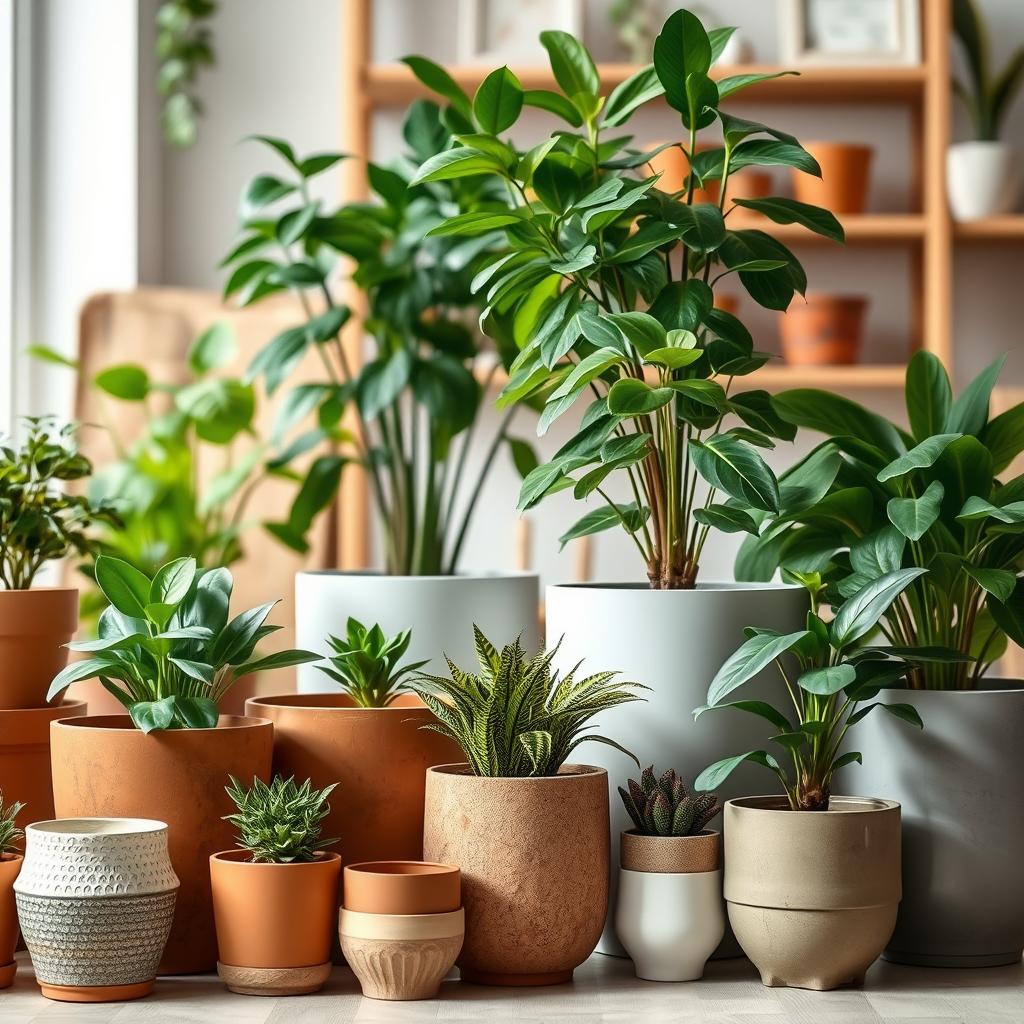
When measuring your plant and selecting a pot, consider both the height and the width to ensure the pot provides the right environment for growth. Proper pot sizing is key to maintaining healthy plants and preventing common issues.
Matching Plants to Your Large Indoor Plant Pots
To maximize the aesthetic impact of your large indoor plant pots, choosing the right plants is essential. The perfect pairing can elevate your home’s decor and create a welcoming atmosphere.
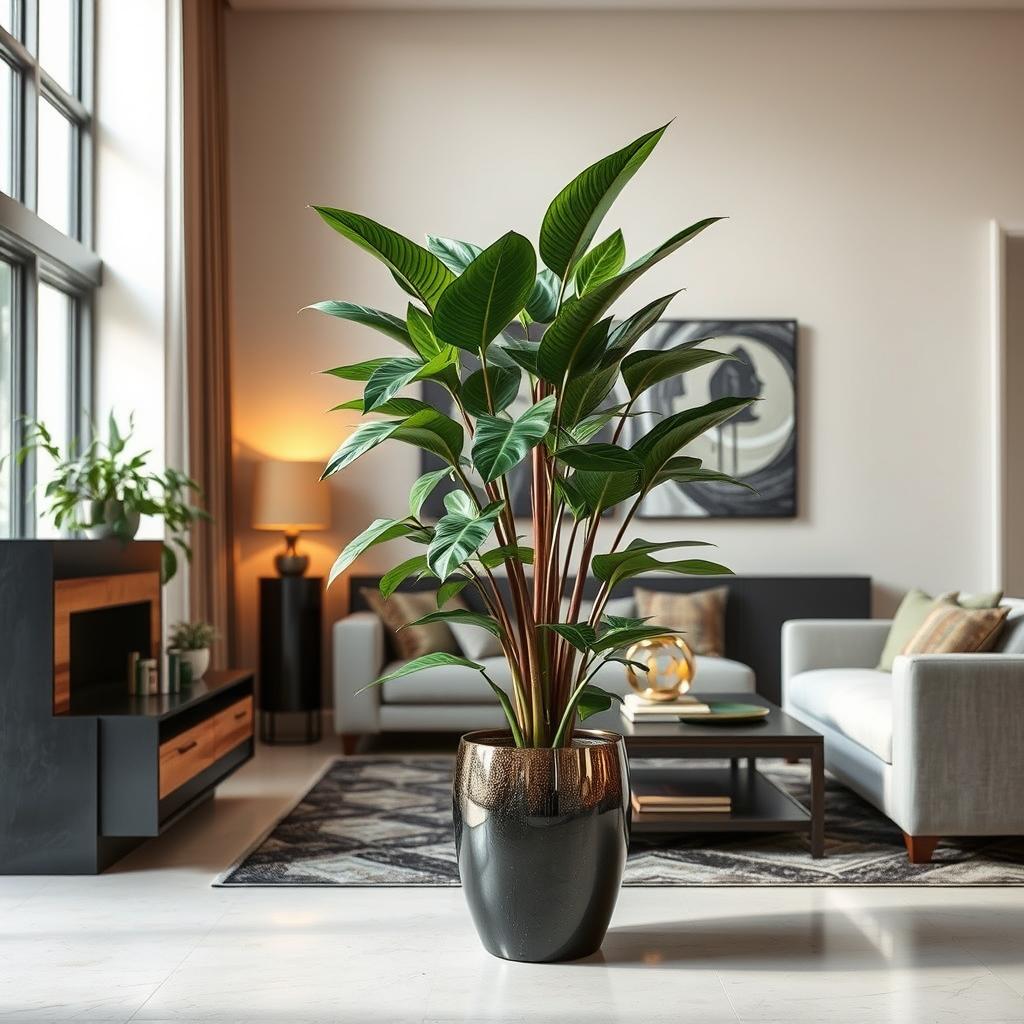
Statement Plants like Monsteras and Ficus
For a dramatic impact, consider statement plants like Monsteras and Ficus. These plants thrive in large pots and can become a focal point in any room.
Tropical Plants with Wispy Leaves
If you’re looking to add movement and lightness, tropical plants with wispy leaves are an excellent choice. Plants like palms and ferns can add texture and visual interest to your space.
When selecting plants, consider not only their aesthetic appeal but also their care requirements and the conditions of your space, such as light and humidity levels. By choosing plants that fit your environment, you can create a healthy and thriving indoor garden.
For a lush display, consider grouping multiple plants in extra-large containers. This can add depth and visual impact to your space, making it feel more welcoming and vibrant.
Practical Features to Consider
When selecting a large indoor planter, it’s crucial to consider the practical features that contribute to both the health of the plant and the ease of maintenance.
Effective large indoor plant pots incorporate features that support plant health and simplify care routines.
Drainage Solutions
Adequate drainage is vital for preventing root rot and ensuring healthy plant growth. Various drainage solutions are available, including traditional holes with saucers, elevated inner pots, and pebble reservoirs, all designed to prevent water damage to floors.
Self-Watering Options
Self-watering planters utilize reservoirs, wicking systems, or smart technology to provide consistent moisture for plants. These planters benefit both plants and owners by reducing maintenance frequency and preventing under or overwatering.
| Feature | Benefit | Consideration |
|---|---|---|
| Drainage Holes | Prevents root rot | Requires saucer or tray |
| Self-Watering System | Reduces maintenance | Initial investment |
| Handles for Mobility | Eases repositioning | Added weight when full |
Stylish Placement Ideas for Large Indoor Plant Pots
To maximize both aesthetic impact and plant health, consider these stylish placement ideas for large indoor plant pots.
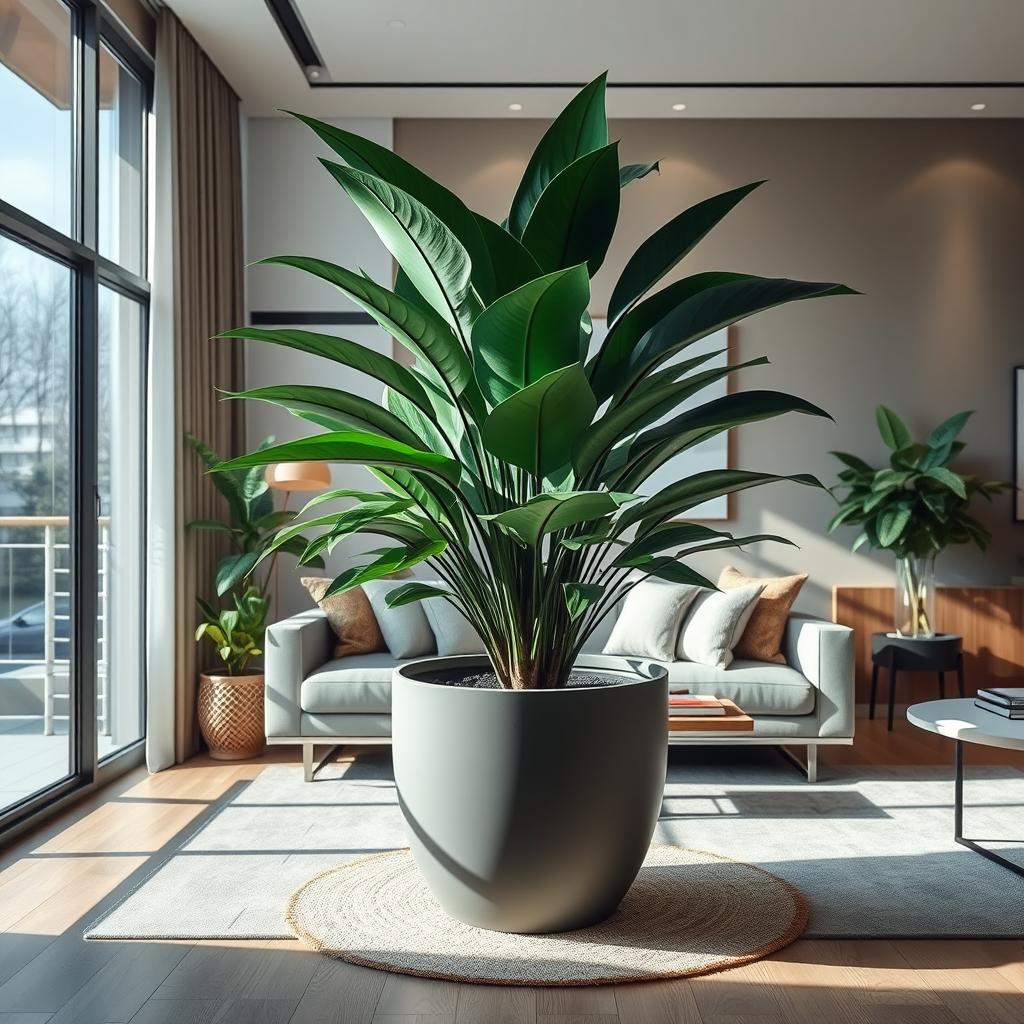
Creating Focal Points
Strategically placed substantial planters can create focal points in living rooms, entryways, and other high-visibility areas, drawing the eye and establishing visual hierarchy within a room.
Defining Areas
Plants and their containers can effectively define distinct areas within open-concept spaces, creating natural room dividers and adding a touch of nature to your home.
To create dynamic visual interest, consider grouping plants of varying heights, textures, and pot styles together. This approach not only adds depth to your space but also allows you to showcase your favorite plants and round planters.
When deciding where to place your large indoor plant pots, consider factors such as light requirements, traffic patterns, and the overall flow of your home to ensure both the health of your plants and the aesthetic appeal of your space.
Conclusion
Large indoor plant pots are more than just containers; they’re design elements that enhance your home‘s beauty.
Choose pots that balance form and function, considering materials, sizes, and features to create a thriving environment for your plant.
Quality planters elevate ordinary plants into extraordinary decor, bringing nature indoor.

